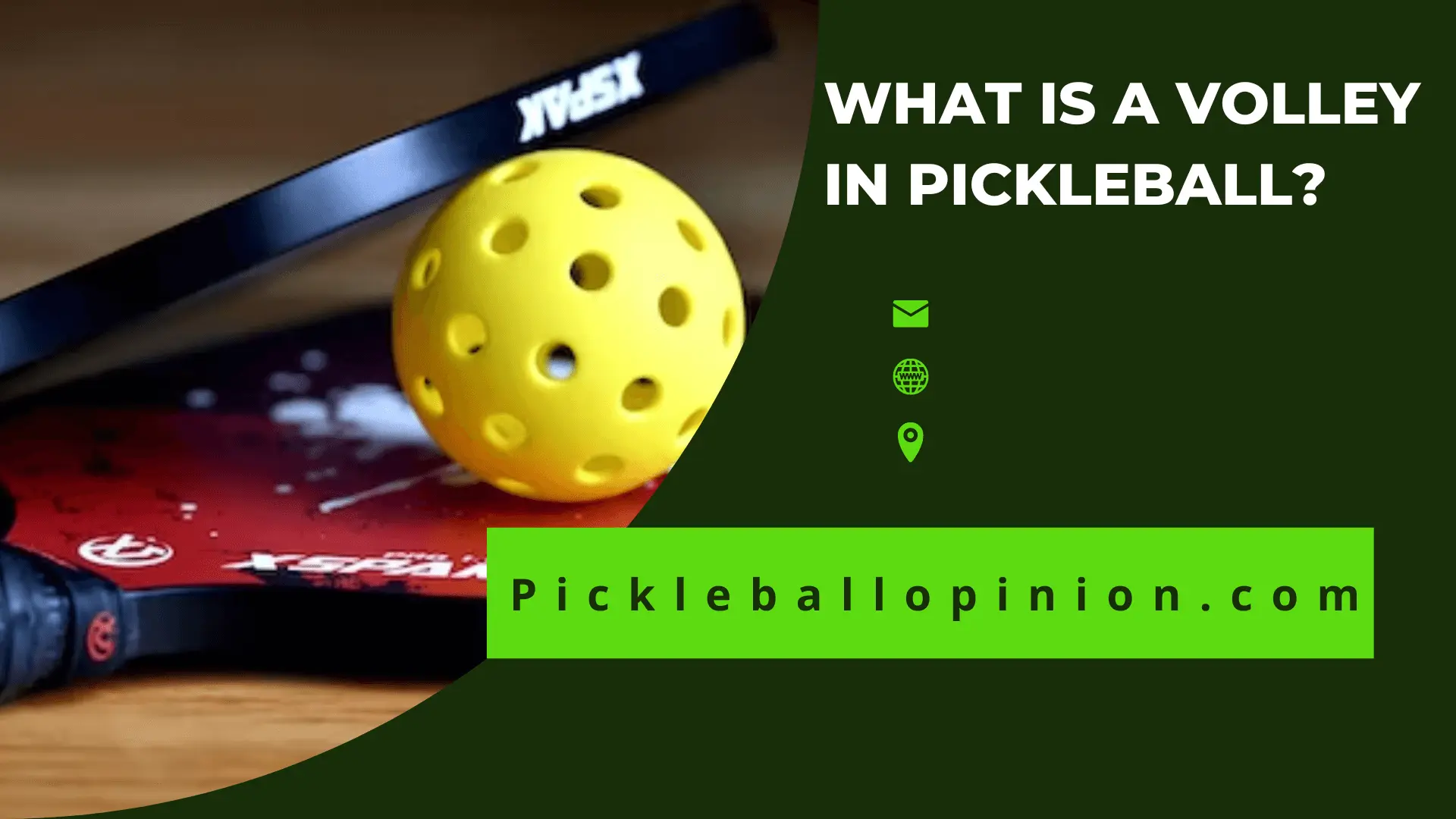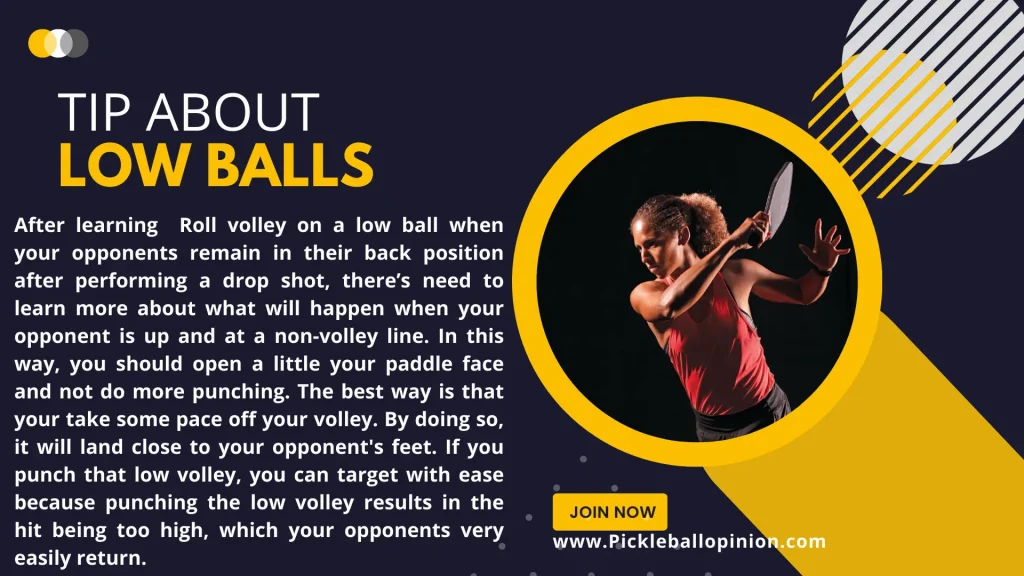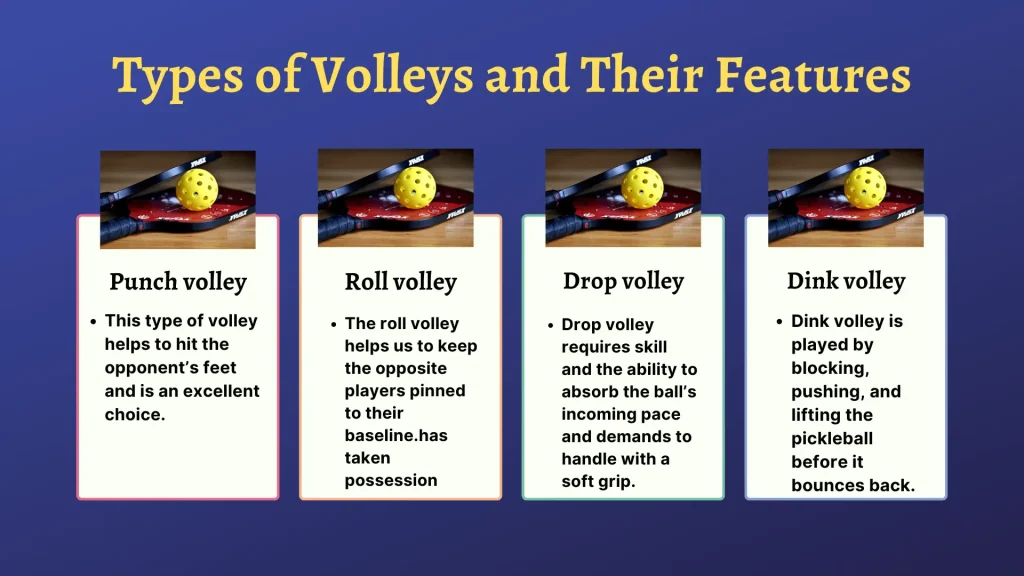What is a Volley in Pickleball? 11 Tips of 2023

Do you know what is a volley in pickleball? It’s a term for pickleball that has become the most popular and fastest-growing game in the USA as well as in the whole world.
Every sports lover wants to know about this popular game. Everyone is searching for what is volley in pickleball which is a famous term. Volleying is a particular type of movement or action in many sports where a paddle or Raquette are used, and pickleball is one of them.
It’s scarce in the life of experts in pickleball, referring to volleys that are so easy that they fall directly to your opponent’s court area. In spite of their popularity, they’re some of the most difficult and challenging shots in the game of today.
What is a Volley in Pickleball?
Does every pickleball lover want to know what is a volley in Pickleball? A volley is a specific kind of hitting in pickleball in which the ball hit out of the air before it bounces is called a volley. Generally, volleys are performed at or adjoining areas of the non-volley zone(NVZ) or it may be at the exact or central zone.
Ready Position at the Kitchen Line(NVZ) as You’re Hitting the Volley in Pickleball
No matter what is a volley in pickleball and what type of volley you’re taking the necessary steps to hit, some comparative things should be essential concerning your “Ready Position” and preparation.
- Have some distance between feet equal to shoulder or slightly more.
- Keep your shoulders up, e.g. chest should be parallel to the net.
- Keep your keens bent somewhat.
- Place your body weight on the toes.
- The paddle should be equal to your body.
As far as the paddle position is concerned, many things must prioritize the proper place of the paddle according to your body. It all depends upon the pickler’s playing method or technique. Some prefer to “neutral” paddle position in which the paddle is straight out and on the edge.
Some picklers like to play a complete backhand default paddle position in which the paddle is in some direction of the ground. Some picklers keep their paddle between these two points:-
- i.e. neither out and on edge
- nor parallel to the ground

Grip While Hitting the Volley in Pickleball
Volleys are like breakneck interchange from the non-volley zone, and there’s no time to counter and change the grips; an exclusive grip is best. The continental grip is proved to be suitable for volleys.
Specific Area Where Should I Hit My Volleys?
Where to hit the volleys all depends on the circumstances and environment of the rally. In the installation of pickleball volleys, the following rules are helpful:-
- Try to hit the volley at your opponent’s feet because it’s not easy to hit the ball at this low point.
- Hit the volley to the paddle-side hip or shoulder of your rivals. Your opponents will be at the backhand ready position and fail to play when at their non-volley zone line or paddle-side hip or shoulder, making them defenseless.
- Hit the volley opposite the standing place of your opponents or far away toward the blank space.
- Hit your volley deep; it forces your opponents to be glued to the baseline. There’s a possibility if your opponents frequently move forward, and then a deep volley may now be in front of their body, e.g. chest high, and may prove a vulnerable attack.
- Hit the volley so that it “drops” or “falls” mildly and gently over the net if you want to reshuffle your position or your opponents are hitting the ball hard at you.
What is a Volley in Pickleball: Types of Volleys
We’ve learned before what is a volley in pickleball and now we are discussing, different types of volleys relating to place or position that are more constructive than others under particular conditions. There’s no all-rounder type of volley, but your court positioning height of the ball concerning the net and your target to hit the ball depend on your success. They’re essentially four different types of pickleball volleys:-
- Punch Volleys
- Roll Volleys (Topspin Volleys)
- Drop Volleys (Block Volleys)
- Dink Volleys
Punch Volleys
Punch volley is frequently used. Usually, a punch volley is a strike with the paddle face that makes an angle of 90 degrees to the court open to some degree, just like in a “punching” manner. When you hit this type of volley, you’re stretching arms out from the elbow that acts as a base.
The important thing is that your wrist should remain solid, and your body should be quiet and peaceful. A punch volley is the best choice for hitting volleys in front of your opponent’s feet or away from them when the ball is at average height.
Roll Volleys
Roll volleys are most effective when your opponent is positioned in their backcourt, and your contact point is below the net’s height. Drop shots or 3rd shots are often played after this. Use a low-to-high swing path; roll volleys are perfect shots to keep your opponents at the baseline.
Drop Volleys
A drop volley is also known as a blocked volley or reset volley. Drop volleying is most effective when your opponent hits the ball at you, and you want to “reset” the point by landing the ball softly over the net. During a drop volley, it is crucial to hold the ball softly and be able to “absorb” the incoming speed.
Dink Volley
The act of volleying a dink shot into the non-volley zone of your opponent when positioned at the non-volley line is called a dink volley. It’s performed with the help of blocking/pushing/lifting the pickleball before bouncing. Taking an opportunity to volley an opponent’s dink shot out of the air helps you avoid retreating from the non-volley line and also gives your opponent less time to react and prepare.

What is a Volley in Pickleball: Perfect Ways of Hitting the Volleys
There are two superb ways to hit the volleys in pickleball. A brief description is presented here:-
Backhand Volley
There’re so many flawless ways to score a backhand volley. A distinctive, common, and easy method to perform is hitting the ball with a slightly open paddle. Soon after the ball goes away from the paddle, players should reduce the level from high to low. This way will spin the ball and, consequently, win a score. The above procedure is a perfect way to score a backhand volley.
Backhand Pickleball Drills
Backhand Pickleball drills of Volley specifically target the development of a player’s backhand volley technique in pickleball. These drills aim to improve the ability to effectively and confidently volley the ball with the non-dominant hand, using controlled wrist and arm movements. Through repetitive practice and focused exercises, players can enhance their backhand volleys, allowing for better control, accuracy, and responsiveness at the net.
There are several types of drills that can be utilized to improve backhand volleys in pickleball. Here are a few examples:
Wall Rally Drill: Stand near a wall and practice volleying the ball against it using your backhand. Focus on maintaining a compact swing, consistent contact, and controlling the ball’s direction.
Partner Feed Drill: Have a partner feed balls to your backhand side, allowing you to practice volleys in a more realistic game-like scenario. Vary the speed and placement of the feeds to challenge your reflexes and adaptability.
Cross-Court Drill: Stand on opposite sides of the net and hit cross-court backhand volleys to each other, focusing on accuracy and control. This drill sharpens your backhand volley skills and improves court positioning. Alternate hitting cross-court backhand volleys to each other, aiming for consistency and precision.
Footwork Drill: Incorporate footwork into your backhand volley practice. Move laterally along the baseline or the net while executing backhand volleys, simulating real-game situations, and improving your positioning.
Mini-Backhand Volley Drills: these drills specifically target the development of a player’s backhand volley technique in pickleball. These drills aim to improve the ability to effectively and confidently volley the ball with the non-dominant hand, using controlled wrist and arm movements. Through repetitive practice and focused exercises, players can enhance their backhand volleys, allowing for better control, accuracy, and responsiveness at the net.
Remember to focus on technique, footwork, and consistency during these drills. As your skills advance, progressively intensify the drill’s difficulty level. Strive for high-quality repetitions, emphasizing proper technique, and aim to maximize your progress over time.
Forehand Volley
Forehand volley is another common way to score. It’s been observed that these volleys are played with extreme either politely gently or with full strength, which might cause the opponent imbalance. A noteworthy thing is there’s only one way to score besides these two methods.
What is a Volley in Pickleball: 11 Ever Best Tips to Improve Your Volley
Tip#1 Stay Low:-
Stay low plays a key role. It’s necessary to hunch/bend on your knees and your weight on your feet, just like squatting. In this position, gravitational force will give you strength/energy to command your shots. It’ll make you alert to provide a sudden response to your pickleball shot. There’s another cause to stay low is that your paddle beneath the ball.
Tip#2 Use your Wrist Effectively
Strike the ball by using your wrist because you want a light grip on the paddle. It’ll help you in volleying with control and accuracy because there’s no need to give too much energy/force to the ball. Of course, when the time comes to strike with an overhead smash, this tip flies out the window.
Tip#3 Keep Focus on the Ball
It’s a salient feature of the volley to keep your eyes on the ball throughout the game. It’ll make you alert, and you’ll follow and strike the ball actively and minimize the drift shot.
Tip#4 Use your Legs Effectively
The use of legs will prove helpful to produce energy during the game because, during volley, your body is in a position of squatting or crouching with the knees bent. The weight on the feet in which organs of legs, e.g., calves and thighs, are worked effectively instead of biceps and triceps. So it would help if you used your legs to play actively.
Tip#5 Hit the Ball Early
Non-volley zone, the kitchen often is a source of confusion for some players, but for beginners in particular. To overcome that nervousness is just to come in and hit the ball all around the court. Try to hit the ball early. If you want to dominate your opponent, try to hit the dominant ball before it bounces. Sometimes, you’ve to let the ball bounce, but the best way is to hit the ball out of the air and far away from your opponent.
Tip#6 Watch your Footwork
When volleying distance between your feet should be according to your shoulders. It’ll provide solid ground and help balance your body to move to and fro as well as right and left all around the court.
Tip#7 Keep your Paddle Slightly Open
The position of your body is as important as playing well. Keep your head always up and back straight, making no angle, and keep your paddle slightly open. Generally, for pickleball players, it’s “ready position” because the ball will come from any direction, so you get ready to combat your rivals.
Tip#8 Be Ready to Adjust
It’s challenging to volley for an extended period if any mistake is committed by your opponent and tries to hit the ball over your head. Be ready to avail yourself of the chance to win the score and swoop over the ball because you aim to beat the score, not the shot.
Tip#9 Randomize your Pace and Aim
Do not strike the ball from the same position and same angle if you want to give your tough time to your opponent. Hit the ball from all directions and use your opponent’s kitchen area. Sometimes, permit the ball to hit in the air and then let the ball bounce.
Tip#10 Practice Makes You Perfect
It’s said, “Practice makes a man perfect” is proven to be true in all aspects of life and during the match as well, where you’ve no time to think about trying new things but one thing which helps you in every field is experience. A significant difference can be seen in your play when you give time on the practice court. Continue where you’re alone, or have a partner carry on your practice even against a wall or cut the court in half horizontally. Your center of attention is to return or volley the ball quickly.
Tip#11 Communicate With Your Partner
In a doubles pickleball game, the most important thing is to make strong chemistry with your partner. You need to make a solid bond with your partner in returning or hitting every ball, e.g., when your partner flies into the opposite team’s zone or leaves room to spare, and have confidence that your partner grips the ball just like you.
Conclusion
In this article, we’ve learned what is a volley in pickleball and what are its types. Going through all possible types of volleys is a complicated task to playing winning pickleball. Learning about all the volley types is crucial, but the key to success is practice and hard work.
